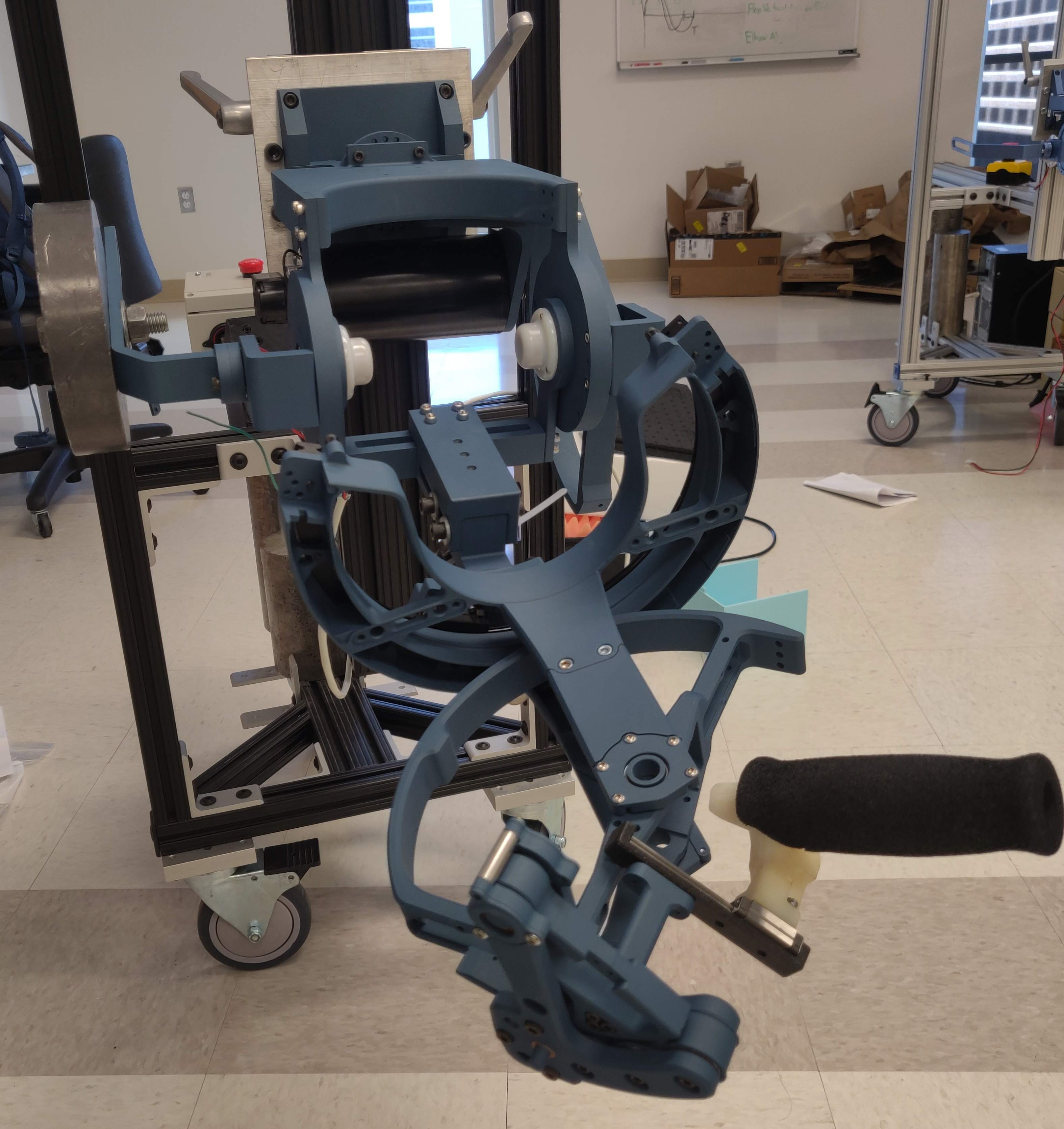Summary - My coworker and I designed a new robot based on two previously used robots to account for the shortcomings of each. The new robot is a 4-DOF serial robot capable of manipulating a users elbow flexion/extension, forearm pronation/supination, wrist flexion/extension, and wrist radial/ulnar deviation. The design involved designing and manufacturing all-new parts as well as updating and adapting parts from previous robots.
MAHI Open Exo Hardware Design
As I had mentioned in my Mahi Exo II Sim page, the MAHI Exo II was designed quite a while ago. Some of the features that had made it useful in the past also became it’s downfall. To use more advanced control algorithms, we needed to have an accurate and efficient dynamic model of the robot. While I was able to derive the dynamic equations for the MAHI Exo II, it took far too long (~200 us) to calculate the eoms to perform any kind of realtime model-based control using the model. The complexity was due to the MEII using a parallel mechanism for 3 of the 5 degrees of freedom.
We decided to combine the OpenWrist, developed in the MAHI lab, with the elbow joint of the MEII to create a robot that had the same number of effective degrees of freedom as the MEII, but was in a serial configuration, and therefore had straightforward dynamics. This new design allowed dynamics to be solved 10x faster, at roughly 20us per solution. This design work was done by myself, and my coworker Jeff Berning, with some help from undergraduate research assistants that we mentored.

The first part of this design consisted of making several parts that would interface the two different subcomponents. This design was important, especially because we added a lockable, passive degree of freedom to the robot to adjust for 90th percentile Male and Female arm sizes.
In the process of this redesign, we realized that there were many design components that had been poorly designed before. Some of the problems that we fixed include:
- Many components were secured by epoxy, rather than interfacing geometry.
- Several fasteners interfaces had been designed with loose-fit holes that allowed a non-negligible amount of movement.
- Pieces interfacing with bearings were touching both the stationary, and moving parts of the bearing.